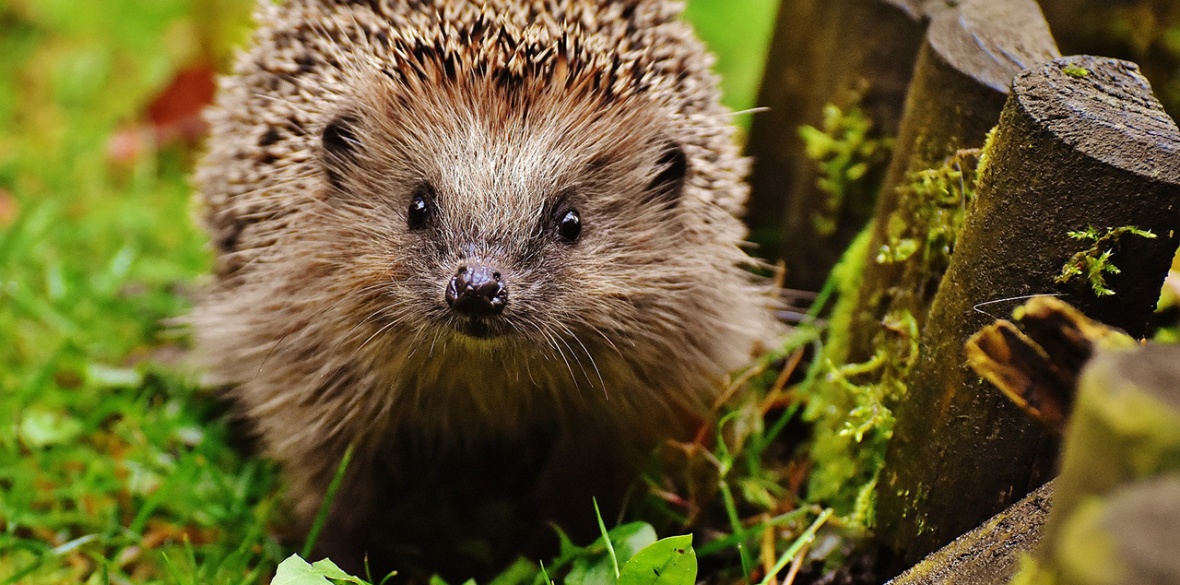This is the last article you can read this month
You can read more article this month
You can read more articles this month
Sorry your limit is up for this month
Reset on:
Please help support the Morning Star by subscribing here
AN URGENT phone call from Sophie, a friend of mine, last week had some very good news.
Her hedgehog house, which I helped to built last summer, had not just survived but she had seen the first hedgehog emerged from hibernation.
No hoglets yet but any babies probably won’t appear until June or July. We can only hope.
Lest the phrase “which I helped her build” confuses you I actually offered much advice from a comfortable garden chair with a glass of Sophie’s homemade lemonade, but I didn’t actually lift a hammer or a saw.
Sophie got her design from the internet where there are as many hedgehog house designs as there is anti-covid vaccination nonsense.
Regular readers will know just how keen I am on hedgehogs, surely the most interesting and curious of our wildlife.
The hedgehog (Erinaceus europaeus) has an outstanding advantage for we who write about wildlife. No need to repeat the word hedgehog. They can be called an urchin, hedgepig or furze-pig or, best of all, the old Romany name of hotchi-witchi.
Sadly they are disappearing from our countryside as fast as tigers are worldwide. Once common, an estimated 36 million in the 1950s there are between one and one-and-a-half million today.
Hedgehogs have a degree of legal protection in Britain — they are listed on schedule six of the Wildlife and Countryside Act (1981), which makes it illegal to kill or capture wild hedgehogs; they are also listed under the Wild Mammals Protection Act (1996), which prohibits cruel treatment of hedgehogs.
It would be much better if they were reclassified under the Wildlife and Countryside Act to make them a schedule five species. This would introduce a legal imperative to search for hedgehogs on sites planned for new developments.
If you have a garden there is much you can do to help them. They need to be able to roam far and wide in search of food, mates and nesting sites. Adults will travel more than a mile or two in a night over many acres covering entire housing estates and neighbourhoods.
If you want to feed them when they visit, please don’t give them bread and milk. Dried dog or cat food is a much better option. Make sure they can reach water (not milk) to drink too.
Get together with your neighbours to cut a five-inch (13cm) square hole in your fence or dig a channel beneath garden boundaries to link your gardens. Most neighbours will be happy to share your hotchi-witchi, particularly if you tell them how many slugs they eat. Do remind them not to use slug pellets as they can poison an urchin.
In your own garden log and leaf piles and wilderness areas make great places for hedgehogs to nest and hibernate. They have poor eyesight but are quite curious, meaning they fall into holes and get stuck, so make sure you cover up any open drains and gullies.
If you have a pond, make sure you provide an access point so that hedgehogs can climb back out — this can be achieved by using a ramp or placing some stones at one end.
All over the country organisations and individuals are doing what they can for the hedgehog. Now is a busy time for Britain’s rescue centres caring for all injured and orphan wild animals and that certainly applies to those dedicated to hedgehogs.
Another threat to out prickly visitor are rat traps. Anyone setting traps for any kind of vermin or non-protected species is supposed to take all reasonable precautions to avoid catching a protected species like the hedgehog.
Not everybody takes sufficient care. It is no defence in law to say that the catch was unintentional.
Sadly Defra is not conscientious enough in policing the importation, sale and use of traps that catch and kill hedgehogs all too easily.
In reality and in the field nobody will be policing Defra’s advice and many hedgehogs will be killed by overzealous gamekeepers and pest controllers.
Some time ago, hedgehogs were getting accidentally caught in McDonald’s McFlurry and KFC Krushems cups.
Public pressure managed to get both fast-food giants to change their packaging to prevent this from happening.
Garden rubbish fires are another source of hedgehog deaths. Always think about hedgehogs if you are planning a rubbish fire in you garden. First think do I need a fire at all? Would the rubbish be better composted?
If you must have a blaze, plan carefully for every year numbers of hedgehogs die or suffer horrible injuries due to fire piles not being checked before being lit.
To help prevent hedgehogs and other wildlife from dying in the flames, try to avoid building your fire until the day it is going to be lit — this will reduce the chances of hedgehogs taking up residence in the bonfire pile for hibernation or just a sleep.
Always make sure you build your fire on clear ground (not on top of leaf litter) and don’t forget to check your bonfire just before lighting.
Once better known as the urchin, country folk would eat hedgehogs often roasted in a clay coat that would remove the spines when the animal was cooked.
They even featured in posh cookbooks cooked in an almond and cream sauce. Today the animal is too rare and threatened to think about eating. You will enjoy your hedgehog watching it the garden far more than on your dinner plate
A bigger threat than you eating them is keeping your garden too tidy. Too many TV programmes have convinced us all to add fashionable decks, patios and other hard garden landscaping. Not good to encourage a hedgehog lodger.
For instance, fallen leaves make the perfect hedgehog nesting material, so don’t be too tidy and clear all of these away. Pile them in a quiet, undisturbed corner of your garden to allow a safe, secure area for them to breed and hibernate.
Attract plenty of natural hedgehog food by keeping your garden diverse with a wide variety of habitats.
Mulch beds with garden compost will encourage plenty of earthworms, woodlice and beetles as it begins to rot down, while wood piles encourage a rich feast of earwigs, centipedes and woodlice.
Don’t be afraid to let your grass grow a little wild and leave some leaf litter as both are important homes for the hedgehog’s prey, including ground beetles and leatherjackets.
Most of these tips come from the many wildlife trusts that are working across Britain to restore habitats for wildlife and campaign for better protection for all nature.
Many run projects to specifically address the disappearance of hedgehogs, including raising awareness among local communities, recording sightings, encouraging people to take action at home and targeting hedgehog hotspots for conservation effort.
Why not help in their efforts? I’m sure online you can find one near to your, and you hedgehog’s home.










